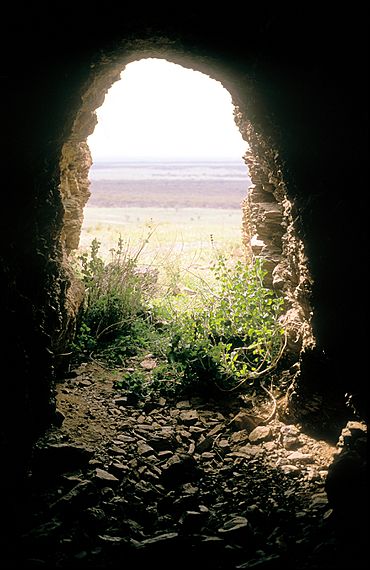Mongolata, South Australia facts for kids
Quick facts for kids MongolataSouth Australia |
|||||||||||||||
|---|---|---|---|---|---|---|---|---|---|---|---|---|---|---|---|
 |
|||||||||||||||
| Postcode(s) | 5417 | ||||||||||||||
| LGA(s) | Regional Council of Goyder | ||||||||||||||
| State electorate(s) | Stuart | ||||||||||||||
| Federal Division(s) | Grey | ||||||||||||||
|
|||||||||||||||
| Footnotes | Coordinates | ||||||||||||||
Mongolata is a small country area in the Mid North region of South Australia. It is part of the Regional Council of Goyder. This area was officially named Mongolata in August 2000. People had used the name for a long time before that.
Contents
The History of Mongolata
How Mongolata Got Its Name
The area known as the Hundred of Mongolata was officially created on December 30, 1875. It was named by Governor Anthony Musgrave. The name "Mongolata" comes from an Aboriginal word. A "Hundred" is an old way of dividing up land for farming and settlement.
Early Life and Farming
Mongolata was first settled by farmers. The first people who lived there tried growing potatoes. Later, they planted barley. However, they often found it hard to grow crops because there was not enough rain.
A post office opened in Mongolata on April 1, 1878. It stayed open until December 31, 1946. There was also a government town called "Tracy" planned in 1881. It was near a place called Poonunda Homestead. But this town did not become successful. It was later included in the larger Mongolata area.
A school was built in Mongolata in the late 1800s. But it closed down in 1898.
The Gold Rush in Mongolata
Gold Discovery and Mining
Something exciting happened in Mongolata in 1930: gold was discovered! This led to a small gold rush. At its busiest time, about 120 men worked at the goldfield.
To help the miners, the government built a special plant. This plant had a "battery" to crush the rock and a "cyanide plant" to get the gold out. It was finished in 1932 and opened in March 1933.
Life During the Gold Rush
With so many miners and their families, people tried to open a school again in Mongolata. This happened between 1935 and 1936. But it did not work out.
Most of the miners left by the end of 1936. However, one very important mine, called Byles' Mine, kept working. It continued to operate until 1954. After that, both the mine and the gold processing plant closed down.
How Much Gold Was Found?
The Mongolata goldfield produced a lot of gold. About 11,000 ounces of gold were taken from 7,749 tonnes of rock. Byles' Mine was the biggest producer, finding about 3,900 ounces. The Takati mine found 2,900 ounces, and the Baldina mine found 1,400 ounces.
The Takati mine was famous for its very rich gold pieces. The largest piece found there weighed an amazing 216 ounces!
Most of the gold was found in a type of rock called Cox sandstone. The gold was often inside quartz veins. These veins had a mineral called goethite, which often formed from another mineral called siderite. The real gold was usually found with the goethite. People also tried to find gold in the riverbeds (called alluvial mining), but this was not very successful.
Mongolata Today
Historic Goldfield Ruins
Today, you can still see the historic Mongolata Goldfield Ruins. These include what is left of the cyanide works, an old eating house, dugouts (small shelters dug into the ground), and the former Byles' Mine. These ruins are located off Mongolata Road.
The Mongolata goldfield is very important. It was one of only two goldfields that started in South Australia during the Great Depression. The Great Depression was a time in the 1930s when many people around the world lost their jobs and money. Finding gold helped some people during this tough time. The ruins are now listed on the South Australian Heritage Register, which means they are protected as important historical sites.



